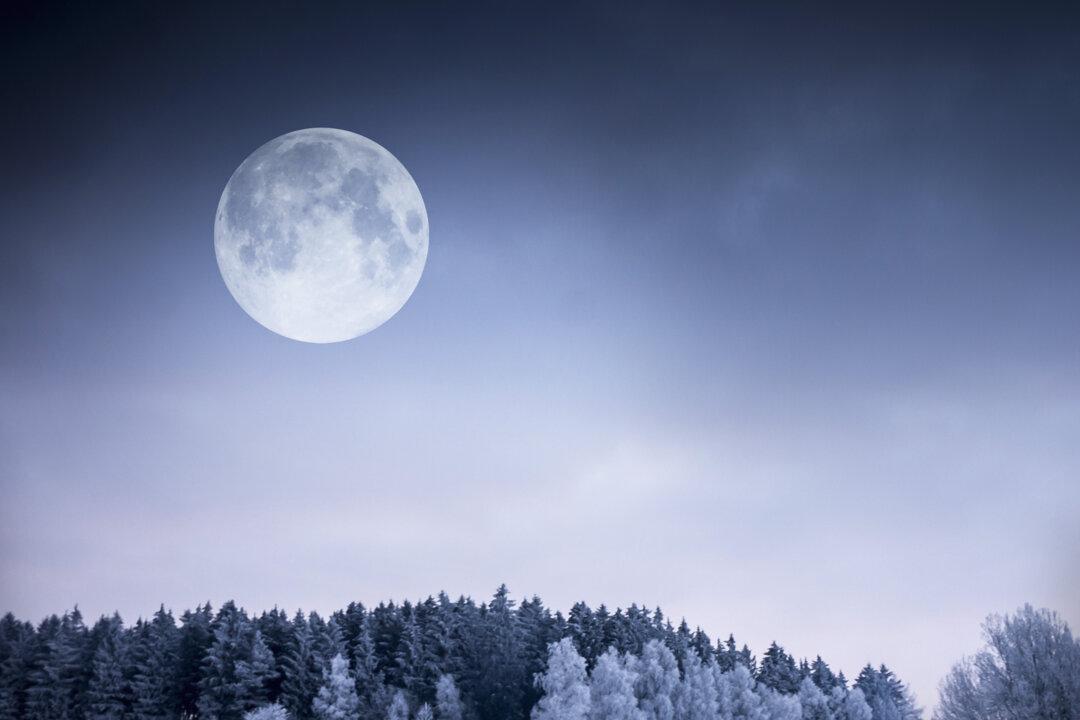The meaning of Christmas lives in its folklore, and it’s amazing how many of the Christmases we remember were so enchanted by one facet of Holiday allure that often goes unsung: the glorious full moon around Christmas time.
The December full moon is called the Cold Moon. And while this year’s Cold Moon won’t fall exactly on Christmas, it will come quite close, arriving on Dec. 26. It may be seen shining remarkably high in the sky by many North Americans on Boxing Day eve—perhaps illuminating their drive home from the shopping mall on one of the shortest days of the year.






